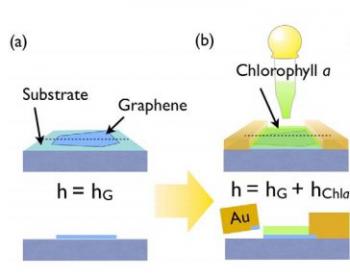Researchers from Taiwan's Institute of Atomic and Molecular Sciences developed a light-activated switch by coating graphene with chlorophyll. This is a simple photon transistor - two silver electrodes, connected by a sheet of graphene which is covered by a layer of chlorophyll (using drop casting).

When the chlorophyll is exposed to light it releases electrons into the graphene. Chlorophyll is very efficient - each photon that it absorbs increases the current by about a million electrons. The device that the researchers made is very basic and will need a lot of work before it can be commercialized.
Graphene has a lot of potentials for energy generation and harvesting. There's a lot of research into using graphene in solar cells (for example in MIT, Manchester University and stanford. Graphene may also be used to boost the efficiency of artificial photosynthesis systems.